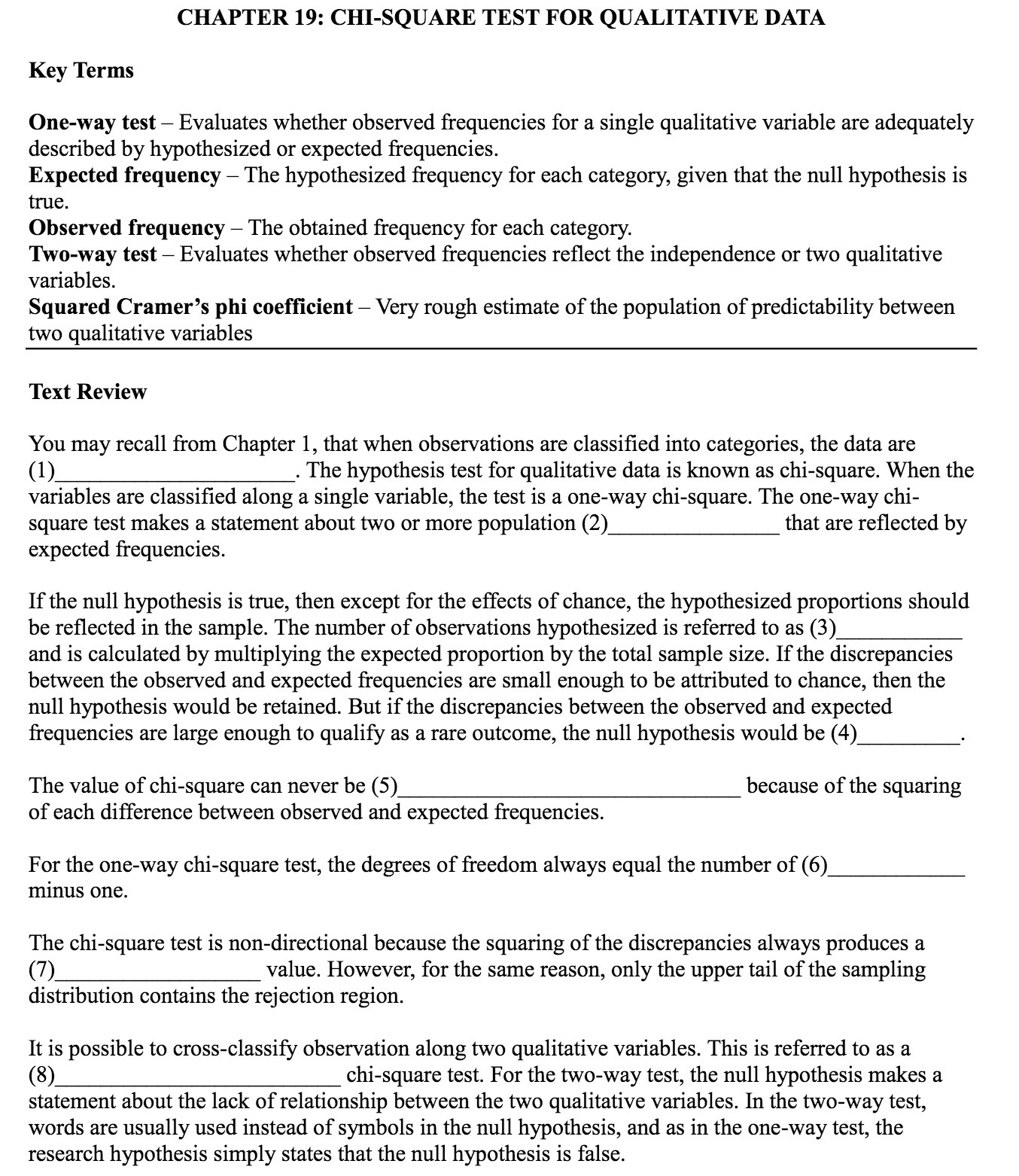CHAPTER 19: CHI-SQUARE TEST FOR QUALITATIVE DATA Key Terms One-way test 7 Evaluates whether observed frequencies for a single qualitative variable are adequately described by hypothesized or expected frequencies. Expected frequency 7 The hypothesized frequency for each category, given that the null hypothesis is true. Observed frequency 7 The obtained frequency for each category. Two-way test 7 Evaluates whether observed frequencies reect the independence or two qualitative variables. Squared Cramer's phi coefcient 7 Very rough estimate of the population of predictability between two qualitative variables Text Review You may recall from Chapter 1, that when observations are classied into categories, the data are (1) . The hypothesis test for qualitative data is known as chi-square. When the variables are classied along a single variable, the test is a one-way chi-square. The one-way chi- square test makes a statement about two or more population (2) that are reected by expected frequencies. If the null hypothesis is true, then except for the effects of chance, the hypothesized proportions should be reected in the sample. The number of observations hypothesized is referred to as (3) and is calculated by multiplying the expected proportion by the total sample size. If the discrepancies between the observed and expected frequencies are small enough to be attributed to chance, then the null hypothesis would be retained. But if the discrepancies between the observed and expected frequencies are large enough to qualify as a rare outcome, the null hypothesis would be (4) The value of chi-square can never be (5) because of the squaring of each difference between observed and expected frequencies. For the oneway chisquare test, the degrees of freedom always equal the number of (6) minus one. The chi-square test is nondirectional because the squaring of the discrepancies always produces a (7) value. However, for the same reason, only the upper tail of the sampling distribution contains the rejection region. It is possible to crossclassify observation along two qualitative variables. This is referred to as a (8) chi-square test. For the two-way test, the null hypothesis makes a statement about the lack of relationship between the two qualitative variables. In the twoway test, words are usually used instead of symbols in the null hypothesis, and as in the oneway test, the research hypothesis simply states that the null hypothesis is false







